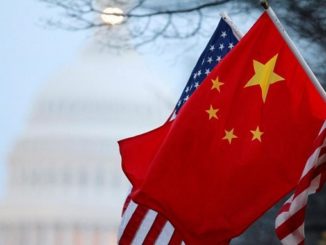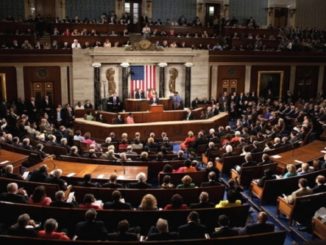
The U.S. economy likely maintained a moderate pace of growth in the fourth quarter, and probably again fell short of attaining the Trump administration’s coveted but elusive 3% annual growth target because of slumping business investment amid damaging trade tensions, Reuters writes.
The Commerce Department’s snapshot of gross domestic product on Thursday will likely show the Federal Reserve’s three interest rate cuts in 2019 helped to keep the longest expansion in history, now in its 11th year, on track and avert a downturn.
Growth is, however, slowing as the stimulus fades from the White House and Republicans’ huge tax reductions in 2018, a package President Donald Trump had predicted would lift growth persistently above 3%. So far it has fallen short of that goal.
The report comes on the heels of the U.S. Federal Reserve deciding to keep rates unchanged. Fed Chairman Jerome Powell told reporters on Wednesday the U.S. central bank expected “moderate economic growth to continue” but also nodded to some risks, including the recent coronavirus outbreak in China.
The Trump administration’s 18-month-long trade war with China last year fueled fears of a recession. Though the economic outlook has improved with this month’s signing of a Phase 1 deal with Beijing, economists do not see a boost to the economy as U.S. tariffs remained in effect on $360 billion of Chinese imports, about two-thirds of the total.
“The economy has clearly slowed, but we are not barreling toward a recession,” said Ryan Sweet, senior economist at Moody’s Analytics in West Chester, Pennsylvania. “The economy is coming off its sugar high in 2019 so is not surprising that we are settling back into the growth rates that we saw prior to the fiscal stimulus.”
Gross domestic product probably increased at a 2.1% annualized rate in the fourth quarter as lower borrowing costs encouraged purchases of motor vehicles, houses and other big ticket items, according to a Reuters survey of economists. A smaller import bill and more government spending are also seen keeping GDP growth at the same pace logged in the third quarter.
The forecast was, however, made before Wednesday’s advance reports showing a sharp widening in the goods trade deficit in December as well as a drop in wholesale inventories. Retail inventories were unchanged last month. The data prompted some economists to cut their fourth-quarter GDP growth estimates by as much as five-tenths of a percentage point to as low as a 1.4% rate.




Be the first to comment